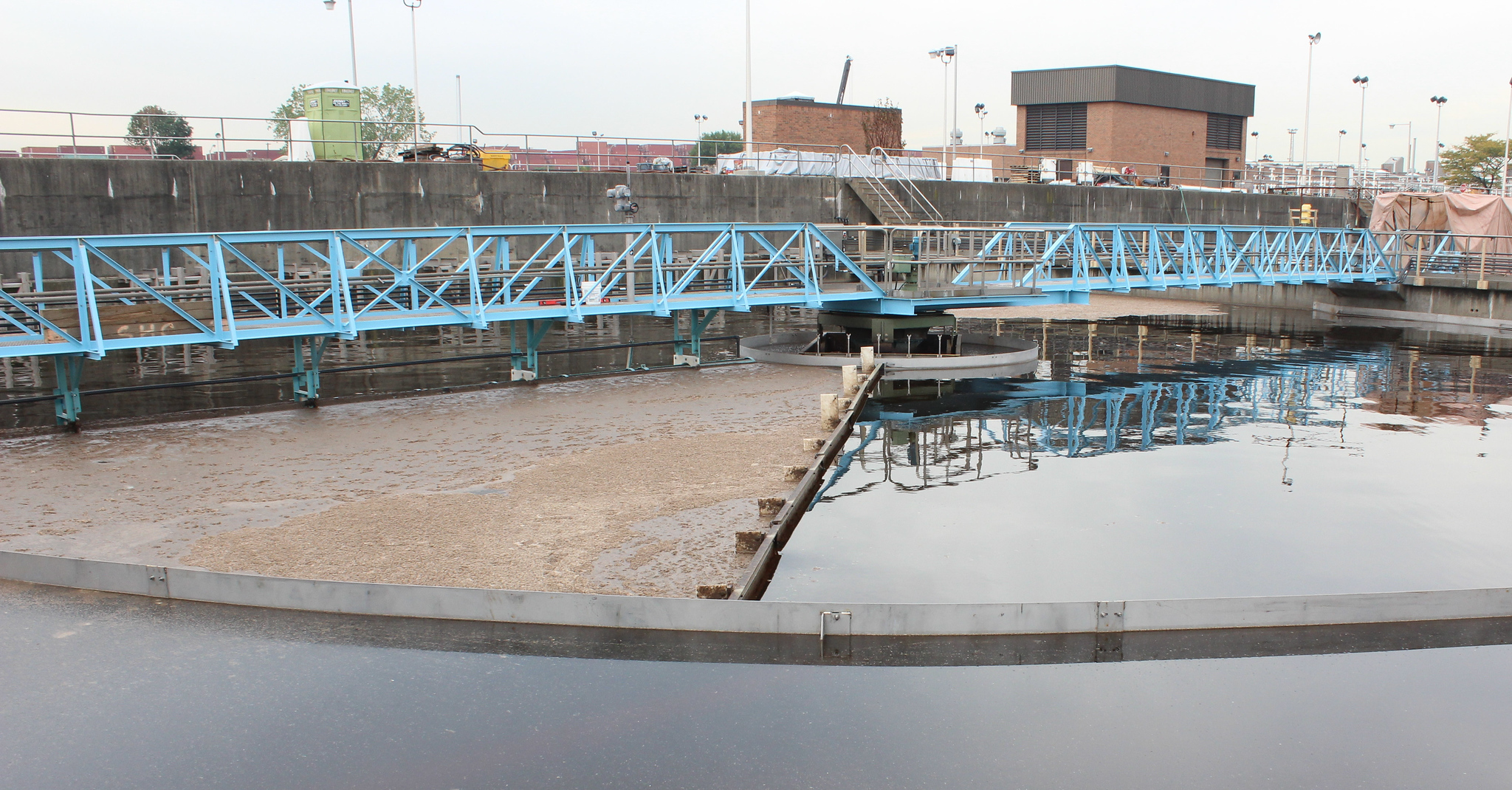Capacity Assurance Program (CAP)
 The Capacity Assurance Program assesses how a treatment plant owner will prevent a plant from exceeding its permitted design flow capacity. This program is required when a treatment plant’s average flow over 12 consecutive months, as reported in Discharge Monitoring Reports (DMRs), reaches or exceeds 95% of the permitted flow.
The Capacity Assurance Program assesses how a treatment plant owner will prevent a plant from exceeding its permitted design flow capacity. This program is required when a treatment plant’s average flow over 12 consecutive months, as reported in Discharge Monitoring Reports (DMRs), reaches or exceeds 95% of the permitted flow.
If a treatment plant fails to meet its NJPDES discharge permit limits, it can adversely impact the waterway it discharges into, threatening drinking water supplies and the habitat of aquatic plants and animals. To prevent further harm, a sewer ban is implemented in the areas served by the affected treatment plant. This measure protects the receiving water from additional damage until the problem can be corrected. To avert the need for a sewer ban, the Capacity Assurance Program serves as a tool which is implemented when reported flows reach or exceed 95% of a treatment plant’s permitted flow. This helps permittees decide how a plant’s remaining flow capacity will be used and whether an upgrade to the treatment plant or sewer system is necessary to assure future capacity.
The owner/operator of a wastewater conveyance system must prepare a Capacity Analysis Report (CAR) when notified by the Department. The CAR must be submitted to the Department within 180 days of the last day of the final month of the 12 consecutive month period that the treatment plans reaches or exceeds its permitted flow, or within 180 days of notification by the Department. The following are causes for requiring a CAR:
- Existing flows to the treatment works approach the design capacity of the conveyance system;
- Excessive infiltration and inflow (I/I) exists in the conveyance system;
- The conveyance system is hydraulically connected to a combined sewer system or a treatment plant that receives flow from municipalities with a combined sewer system;
- There has been an unpermitted discharge from the treatment works, including sanitary sewer overflows; or
- The 12 consecutive month average flow equals or exceeds the permitted flow at the receiving treatment plant and any municipality or sewage authority has not cooperated with the permittee to conduct the required capacity analysis.
Learn more about the CAP Program and CAR in the resources below.
- Frequently Asked Questions for the Capacity Assurance Program – CAP
- Fact Sheet: Capacity Analysis Report
- Wastewater Flow Summarization Quarterly Report WQM-007
- NJAC 7:14A-22.16 (201kb)
Municipal Facilities Average Flow vs. Permitted Flow – User Customizable Report Tool
This tool creates a report that can assist in determining if a treatment plant has reached or exceeded the CAP threshold of 95 percent based on a 12-month average reported flow from DMRs vs permitted flow. This report will show results of a calculation averaging the most recent 12-month flow reported on DMRs as a percentage of the treatment plant’s permitted flow.
When using this tool, it is recommended that the 1st day of the first month be set as the start date and the last day of the twelfth month be used as the end date (i.e. 4/1/22 – 3/31/23).
Note: Missing or incorrect data may affect the result. The Department works with permittees to resolve missing or incorrect data as quickly as possible.
- 12-consecutive month average flow as a percentage of a treatment plant’s permitted flow (Surface Water)
- 12-consecutive month average flow as a percentage of a treatment plant’s permitted flow (Ground Water)
2023 Reports:
12-consecutive month average flow as a percentage of a treatment plant permitted flow for Surface Water (1/1/23 – 12/31/23)
12-consecutive month average flow as a percentage of a treatment plant permitted flow for Ground Water (1/1/23 – 12/31/23)
Sewer Bans and Exemptions
The Sewer Ban Program requires the imposition of sewer connection bans for treatment plants failing to meet their NJPDES effluent discharge limitations, or conveyance systems that do not have adequate conveyance capacity. A moratorium may also be imposed on treatment plants when the sum of existing wastewater flows and the flows allocated to approved projects (that are not yet operational), has reached 100 percent of the plant’s permitted capacity.
The purpose of the sewer ban program is to limit further pollution by restricting additional sewage flow to the non-conforming treatment works. Applicants seeking an exemption must fill out this application form. If you have questions regarding sewer bans or sewer ban exemptions, please contact the Capacity Assurance Program (CAP) in the Bureau of Ground Water, Residuals and Permit Administration (BGRPA).